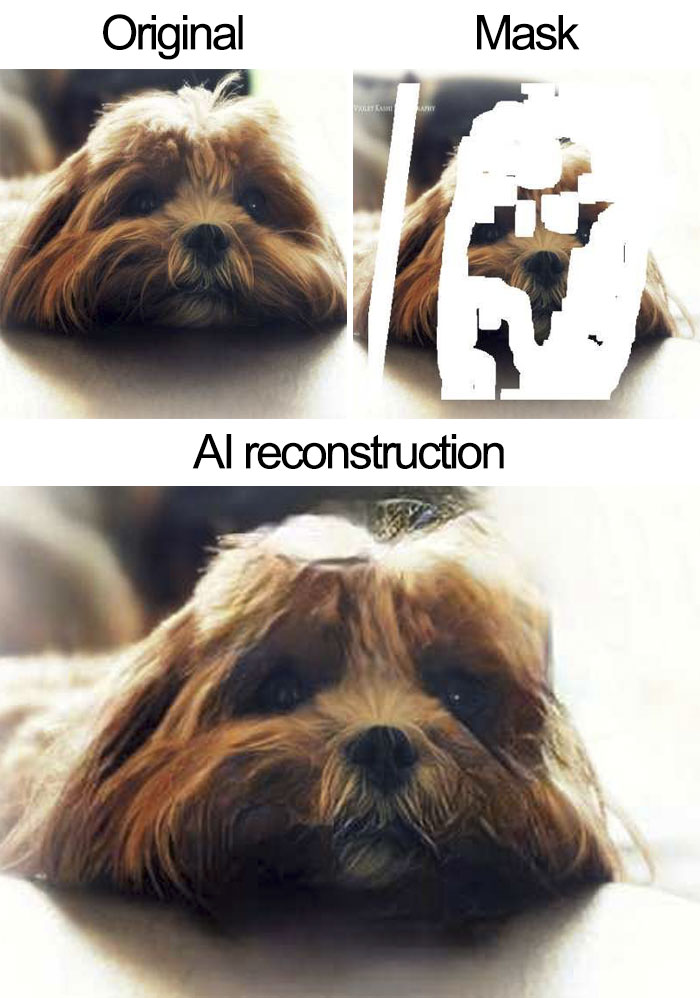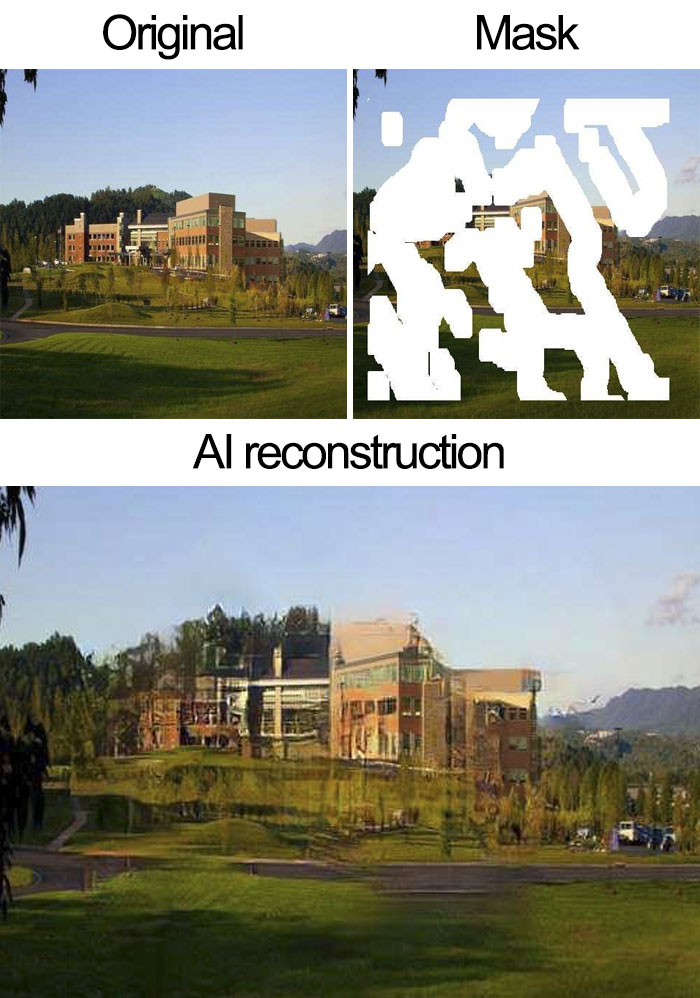NVIDIA has introduced an amazing "state-of-the-art deep learning" method that can reconstruct an incomplete image. Last week the company released a video showcasing examples of the new modern technology tool.
The main competitor for this new tool is Photoshop's Content-Aware fill. It uses information from surrounding pixels for photo restoration. However, this tool fails badly when it encounters a more complex image. NVIDIA took a different approach and put its new tool ahead of the competitors by employing artificial intelligence technology that understands what the subject should look like. However, it remains unknown when this photo manipulation tool will be available for the consumers.
Even if this new photo editing method isn't excellent at making esthetic reconstructions, it is definitely very good at recognizing what each part of the image represents. All the imperfections aside, we can't wait to test it out.
Check out the interesting photos below and tell us what you think in the comments.
More info: news.developer.nvidia.com
This post may include affiliate links.
I really don't get this. It takes a good image then makes it bad. What's the point of that?
People complaining you can see the flaws in the reconstructed pictures are missing the point entirely. It's EXTREMELY hard for a software to get a picture with blank spots like that and try to fix those missing spots with something that looks like it fits. I think that for a better effect they shouldn't have shown the originals. You have to undestand that the software isn't using the original picture as a guide, it's literally just working with the messed up picture, and coming up with a fix based on that damaged picture alone. And it's a freaking software, not a thinking human being who can look at a picture and understand what it's supposed to look like (specially when you have the orignal for comparison). The results are truly outstanding. But maybe that's something that you can only truly appreciate if you work in the area and know how extremely hard this is to accomplish...
This really is incredible. Yes, the reconstructions aren't perfect, but they're pretty damned good. Better than most people could do if not allowed to see the whole picture. Also, think of it this way; this technology can only improve. One day the results will be even better. I think the main problem right now is that some of the reconstructed parts are a bit... sharp. Jagged.
Load More Replies...People complaining you can see the flaws in the reconstructed pictures are missing the point entirely. It's EXTREMELY hard for a software to get a picture with blank spots like that and try to fix those missing spots with something that looks like it fits. I think that for a better effect they shouldn't have shown the originals. You have to undestand that the software isn't using the original picture as a guide, it's literally just working with the messed up picture, and coming up with a fix based on that damaged picture alone. And it's a freaking software, not a thinking human being who can look at a picture and understand what it's supposed to look like (specially when you have the orignal for comparison). The results are truly outstanding. But maybe that's something that you can only truly appreciate if you work in the area and know how extremely hard this is to accomplish...
This really is incredible. Yes, the reconstructions aren't perfect, but they're pretty damned good. Better than most people could do if not allowed to see the whole picture. Also, think of it this way; this technology can only improve. One day the results will be even better. I think the main problem right now is that some of the reconstructed parts are a bit... sharp. Jagged.
Load More Replies...
 Dark Mode
Dark Mode 

 No fees, cancel anytime
No fees, cancel anytime 

















































































